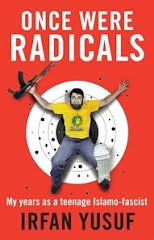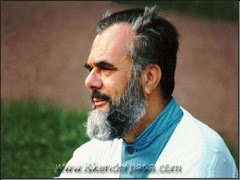WHEN a longstanding priest loses the confidence of parishioners of a mainstream church, the matter is dealt with using internal and established church law. A church hierarchy exists to arbitrate or establish a tribunal.
In the dispute between longstanding Imam Swaiti, of the Yarralumla Mosque, and some of his parishioners, it isn’t so simple. The dispute raises fundamental issues affecting the management of Muslim religious life in secular Australia.
Unfortunately, Australian Muslims aren't as adept at juggling the requirements of Islamic sacred law (sharia) and Australian law to resolve internal religious disputes. This is despite the fact that so much Australian law on alternative dispute resolution is derived from sharia.
Imam Swaiti relies on the fact that he has served as imam of the mosque for more than a decade. Under sacred law, he may be entitled to argue this. But what exactly is an imam's role in Australia?
The term imam means a leader. In an Islamic liturgical sense, it refers to the person who leads five daily prayer services at the mosque. Traditionally, a mixed-gender prayer service can be conducted by any male selected by the congregation. Once the imam loses the confidence of most of the congregation, he can be replaced.
In Muslim diaspora communities, imams don't just lead prayer services. They also act as resident scholars, advising parishioners on questions of religious law.
Classical Islamic sacred law was codified by private imams supported by Muslim civil society with minimal state involvement. The earliest and most authoritative imams of Islam frequently found themselves on the wrong side of rulers. Government-sponsored imams were seen as corrupt and compromised, lacking the independence to carry out what the Prophet Muhammad described as the greatest jihad to speak the truth to a tyrannical ruler.
Islamic history is, therefore, a case of reverse secularism. In the Catholic West, the State fought to keep itself independent of the Roman Church. Throughout the Islamic world, Muslim religious authorities struggled to remain independent of rulers who attempted to usurp the mantle of religious leadership.
In Sunni theology, religious and temporal leadership was united in the person of the Prophet Muhammad and his four, rightly-guided successors. In Shi'ite theology, the two forms of leadership were united in the prophet and his 12 direct descendants, whom Shi'ites refer to as the 12 imams of the prophet's household, and who are also held in high esteem by Sunnis.
Yet rulers of both persuasions have tried to re-unite the two leadership forms, and have often suffered greatest resistance from imams themselves. Modern Muslim states have tried to regulate religious institutions by establishing ministries to employ and train imams, often with only minimal success.
Australian imams inherit this traditional defiance to leadership structures, with despotic kings and rulers replaced by boards and committees who manage mosques. Australian mosques were usually established in areas where a Muslim community reached a critical mass and required a place for communal worship and religious festivals.
Indeed, sacred law requires that Muslim congregations above a certain size are required to hold a Friday service where a khutbah (or sermon) on the sacred law and on current events is delivered.
To meet these needs, parishioners first establish an association in accordance with local law, agreeing on a constitution and electing an executive. As the community grows, the mosque might decide to appoint someone to lead prayer services and provide advice on ceremonial matters, often on a part-time voluntary basis to begin with.
Sydney and Melbourne mosques tend to be established along ethnic and cultural lines. Hence, the imam tends to be from the same ethnic and linguistic background as the congregation. Muslim Canberrans, on the other hand, are a uniquely multiethnic community, with all Muslim sects and ethnic groups represented.
During the 1960s, when my parents first lived in Canberra, the community consisted mainly of embassy staff, students and academics. Canberra Muslims still regard themselves as a more educated, secular and gentrified congregation. As it is, many modern Muslim cultures regard imams as belonging to a lowly profession. Imams claim specialist knowledge of intricacies of the sacred law which many parishioners see as largely irrelevant. Imams are poorly paid, and many are forced to rely on taking a second job or to engage in some kind of business.
One would expect that such an educated community would have organised itself and its structures in a manner whereby recourse to courts (whether of law or of public opinion) would not be necessary. One would also expect the community to have developed strategies enabling imams to perform traditional roles while enabling them some security of employment and a decent salary.
The unfortunate response of many Muslims, disgruntled with conservatism and the irrelevance of imams, has been to avoid the mosque altogether. Those frequenting the mosque tend to avoid involvement in management issues. The result is that management is frequently left in the hands of those least capable.
Ironically, sacred law provides little specific guidance on how imams are to be appointed or dismissed. Different cultures have established different norms. Resolving Muslim institutional disputes in Canberra is a new phenomenon, especially with many cultures and two legal systems at play.
An ACT magistrate recently told Canberra mosque factions that her court did not have the wisdom of Solomon and Allah, and that the factions needed to resolve the dispute themselves. Perhaps Muslims could look to their spiritual elder cousins for some guidance.
Islam and Judaism have more in common with each other than with any other faith. In religious terms, the roles of both rabbis and imams are similar. Both assist their congregations in understanding and practising the sacred law. Both advise and frequently lead prayer services. At the same time, both faiths operate without a priestly hierarchy and allow lay persons to lead major services.
In this sense, both faiths enjoy a kind of liturgical democracy. So what happens when an influential part of a congregation decides it wishes to replace its leader? In this regard, Jews have had at least 2000 years experience living as Diaspora communities, with internal mechanisms for resolving such disputes. Both the Canberra Mosque and the Adelaide Hebrew Congregation are experiencing this situation right now.
In the case of the Adelaide Shul, the Australian Jewish News recently reported that parishioners and the rabbi in question have agreed for the matter to be arbitrated by the London Beth Din. The Beth Din (meaning literally House of Judgment) is a religious court set up by the Jewish congregation and consisting of rabbinical jurists with special training and experience in dispute resolution. In Adelaide, the parties have signed a binding arbitration agreement. This would presumably make any decision enforceable by a secular court.
The Canberra Mosque management have argued in the media that Imam Swaiti was an employee subject to their direction. Imam Swaiti's supporters argue that he cannot be stopped from leading prayer services as he still maintains the confidence of his congregation.
In a sense, both are right. Surely, it is not an act of rocket science for Canberra's mosque managers and a group of Muslim lawyers to develop some procedure for resolving the matter. Unfortunately, Muslim leaders have a poor track record in resolving internal disputes. The umbrella Australian Federation of Islamic Councils established a system of Muslim arbitration. Sadly, that system wasn't in evidence during more than 18 months of internal AFIC disputation and resulting litigation.
In the long term, as more Australian mosques follow Canberra's lead and cross ethnic and sectarian boundaries, such problems will become more common. Mosque congregations must develop some kind of model for the employment of imams. The present situation in which imams are expected to act as a highly underpaid combination of priest, jurist, counsellor, teacher, community spokesman and spiritual guide cannot continue indefinitely. Muslim communities need to develop an alternative model for imams, ensuring it becomes a respected profession.
This, however, will require educated, secular Muslims becoming at least partially interested in management of their religious institutions. John Howard insists 99 per cent of Muslims have integrated and adopted Australian values. Perhaps complete disinterest in religion is an Australian value Muslims should ignore for the time being.
Irfan Yusuf is a Sydney lawyer who has acted for Muslim peak bodies, independent schools, mosques and imams in employment and structural matters. He is associate editor of AltMuslim.com. This article was first published in The Canberra Times on Saturday 26 May 2007.
© Irfan Yusuf 2007











No comments:
Post a Comment